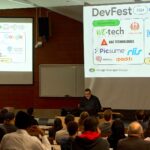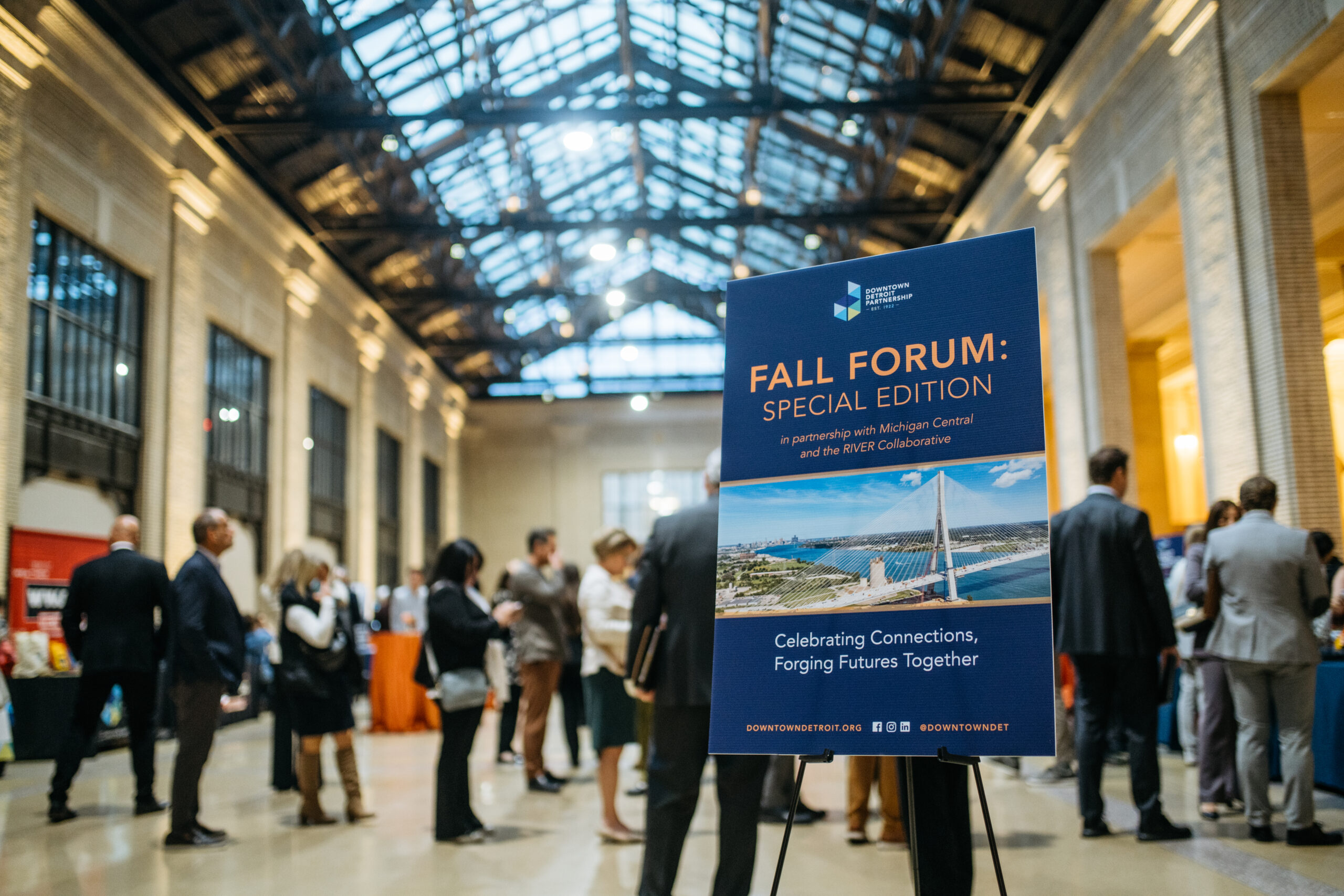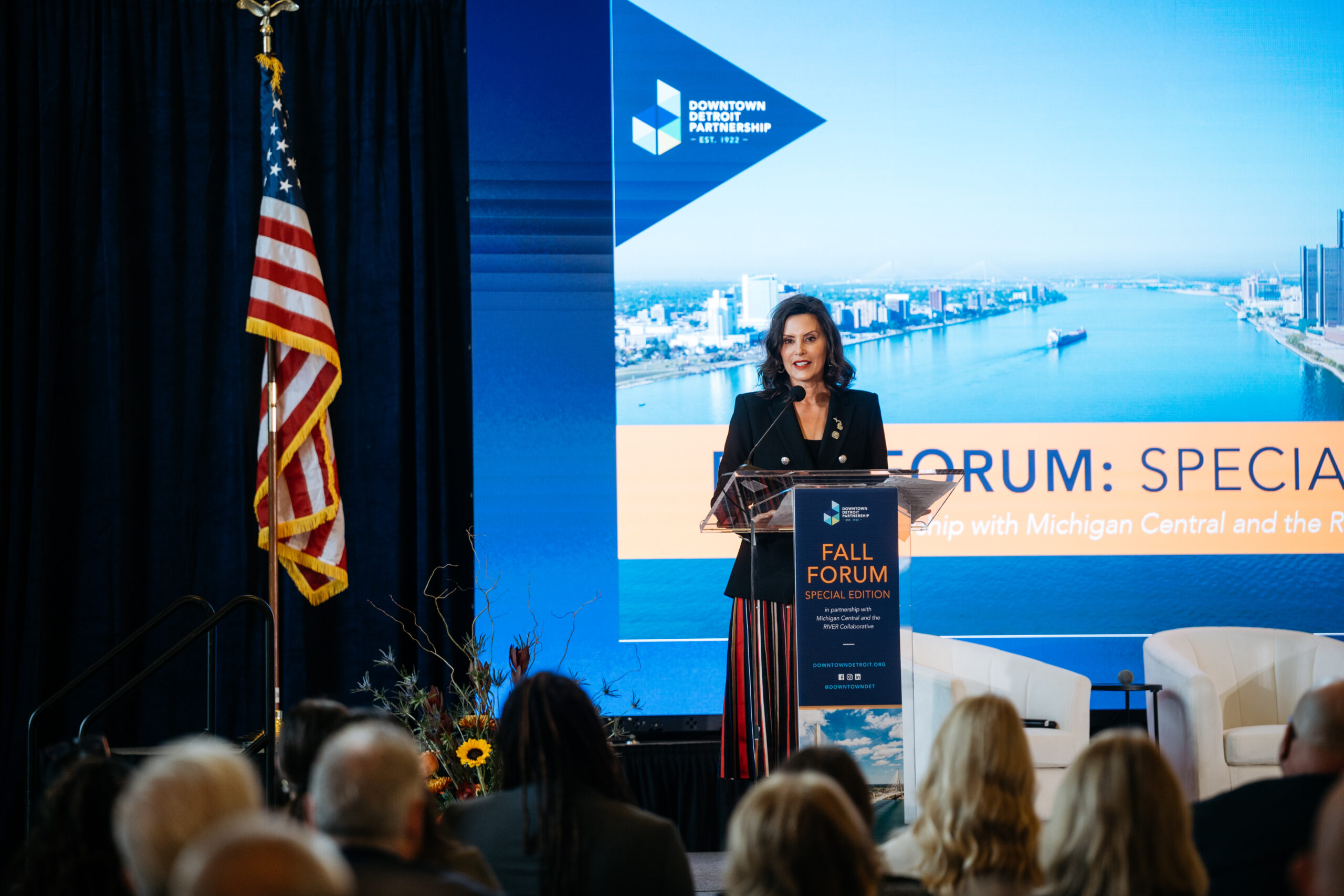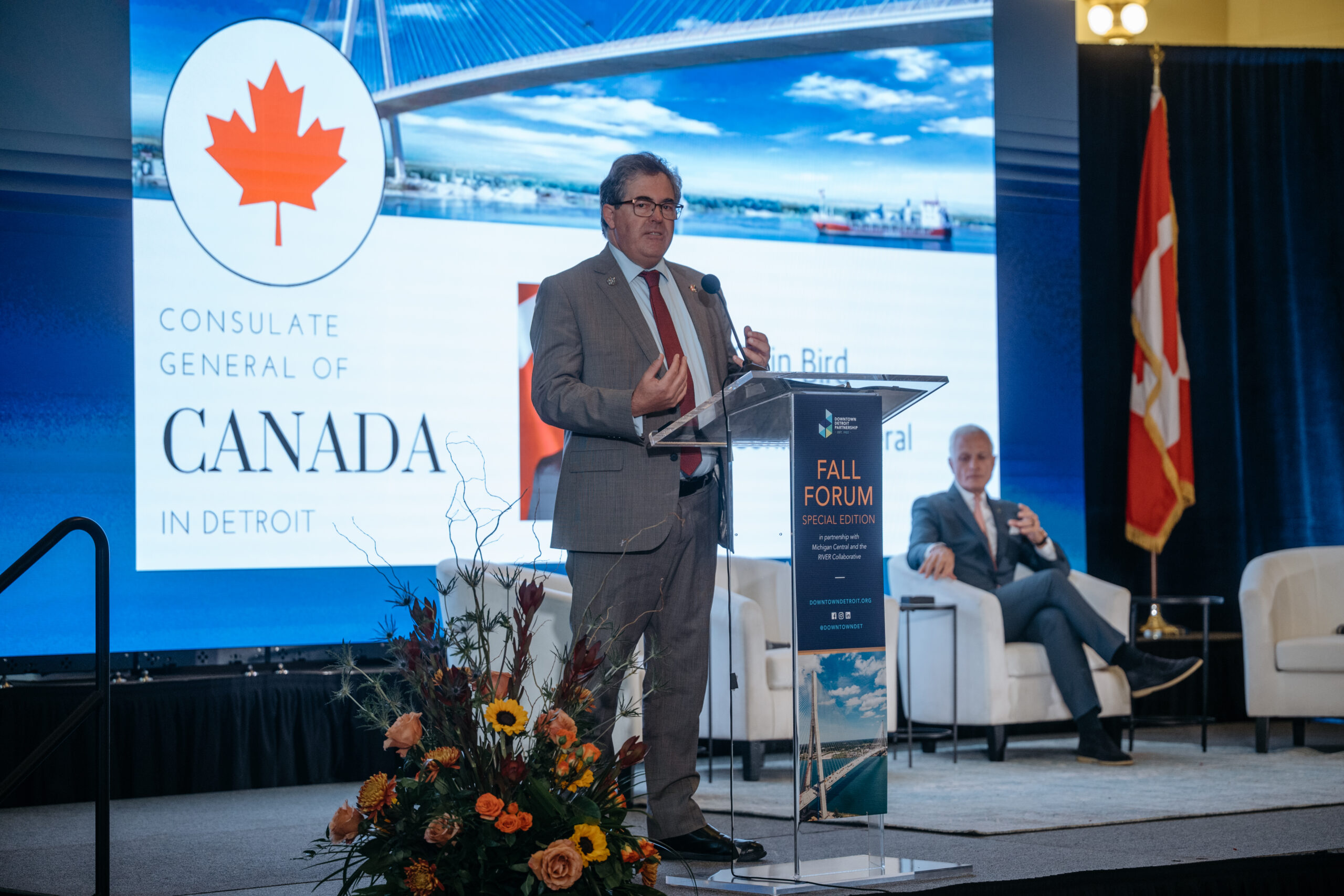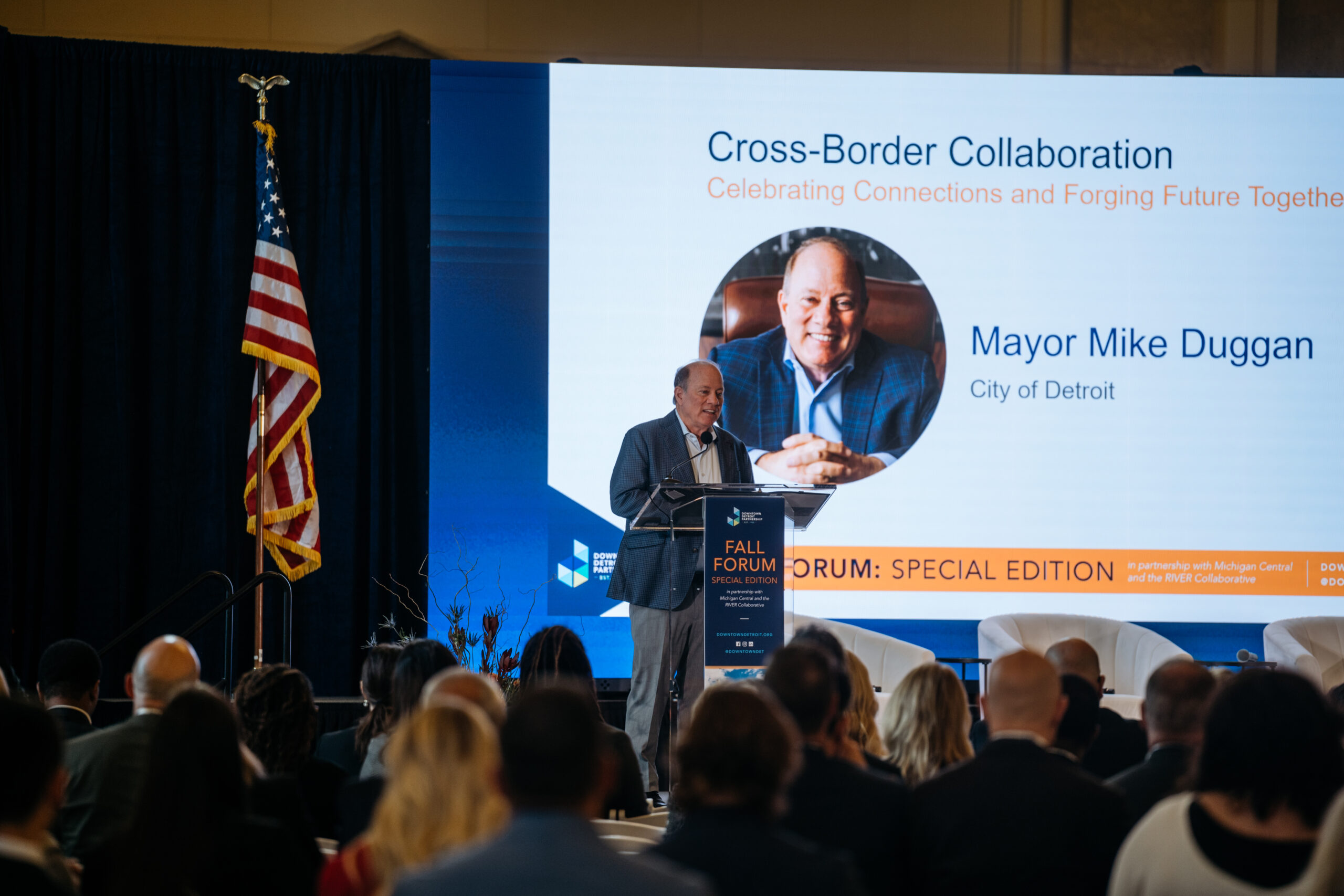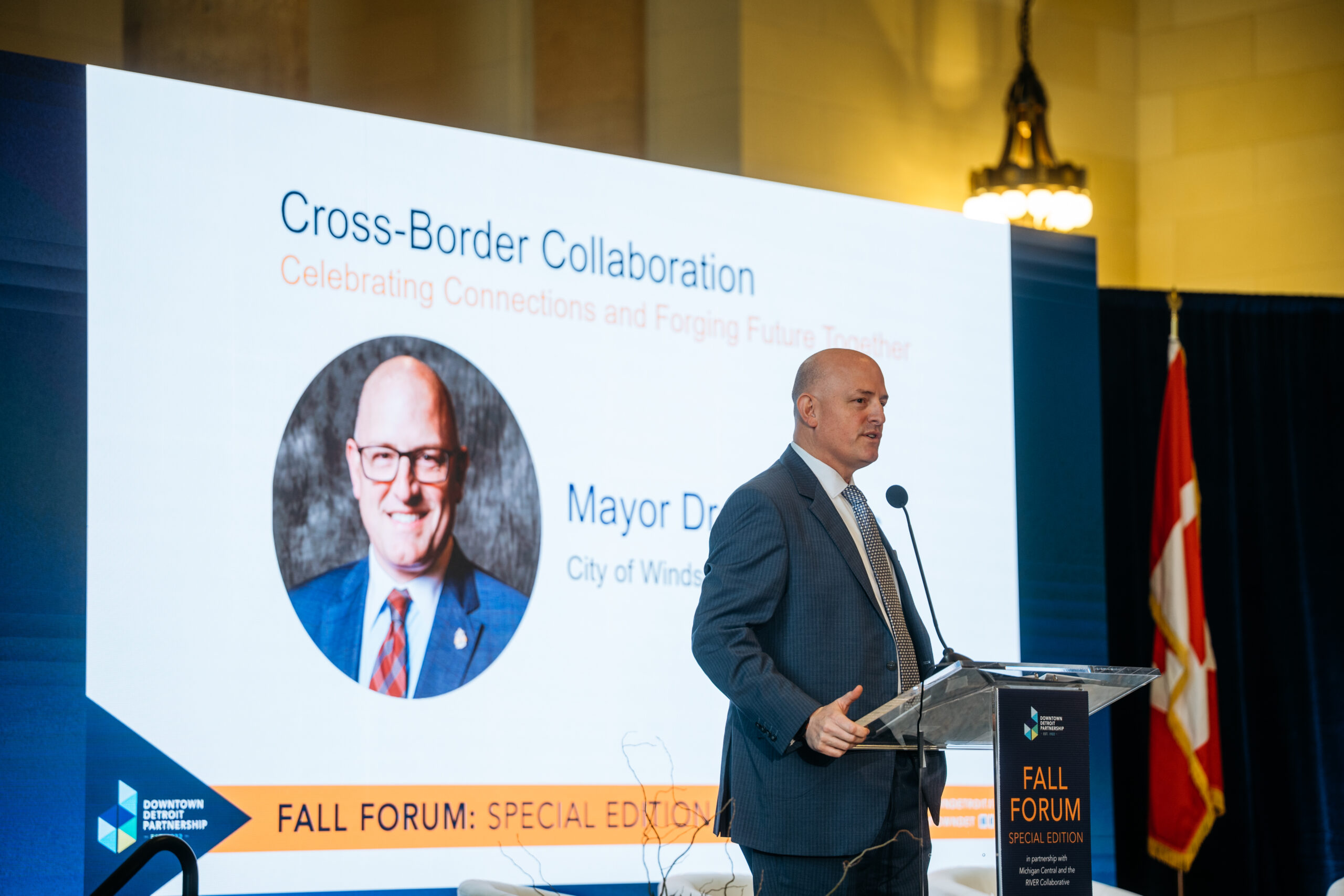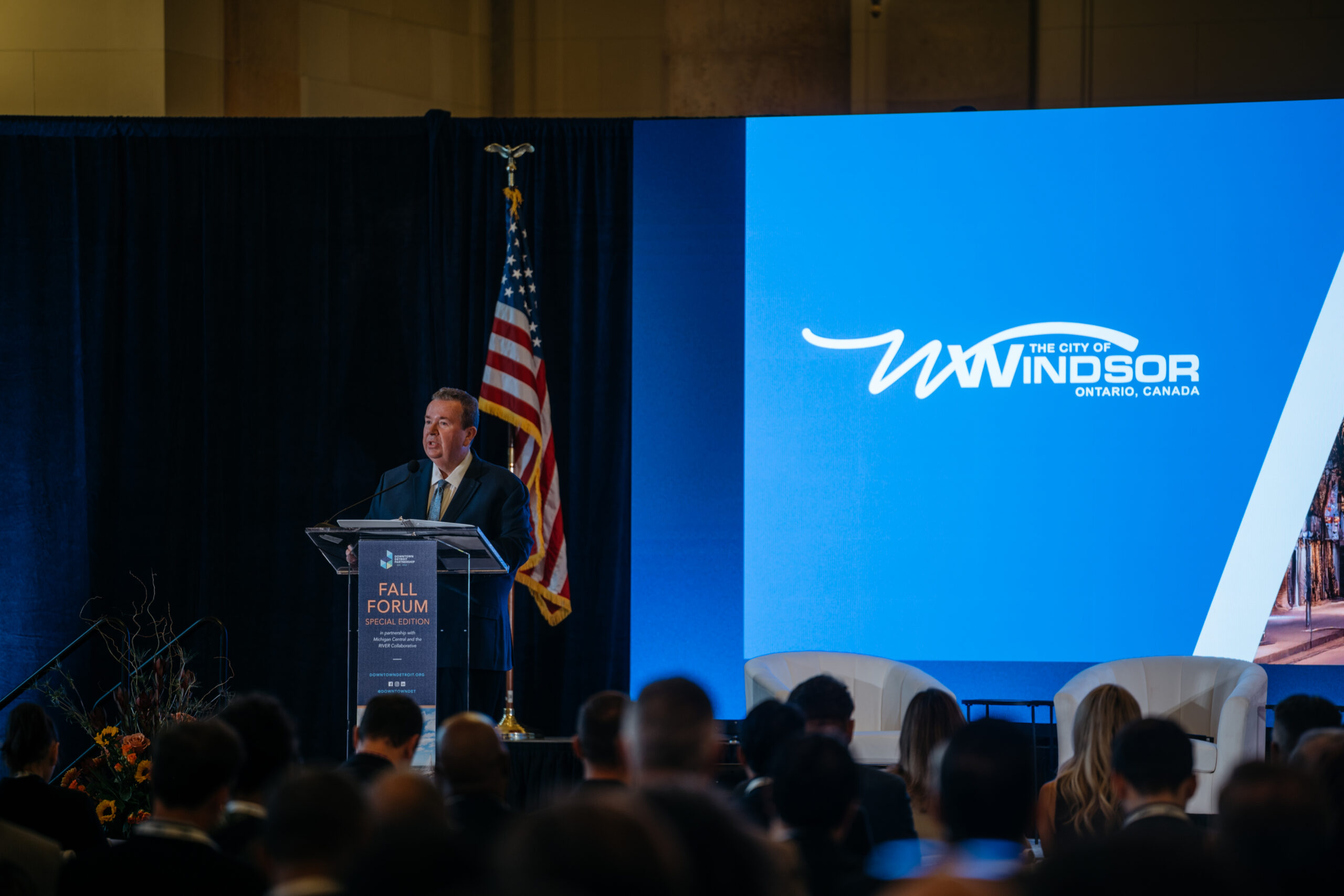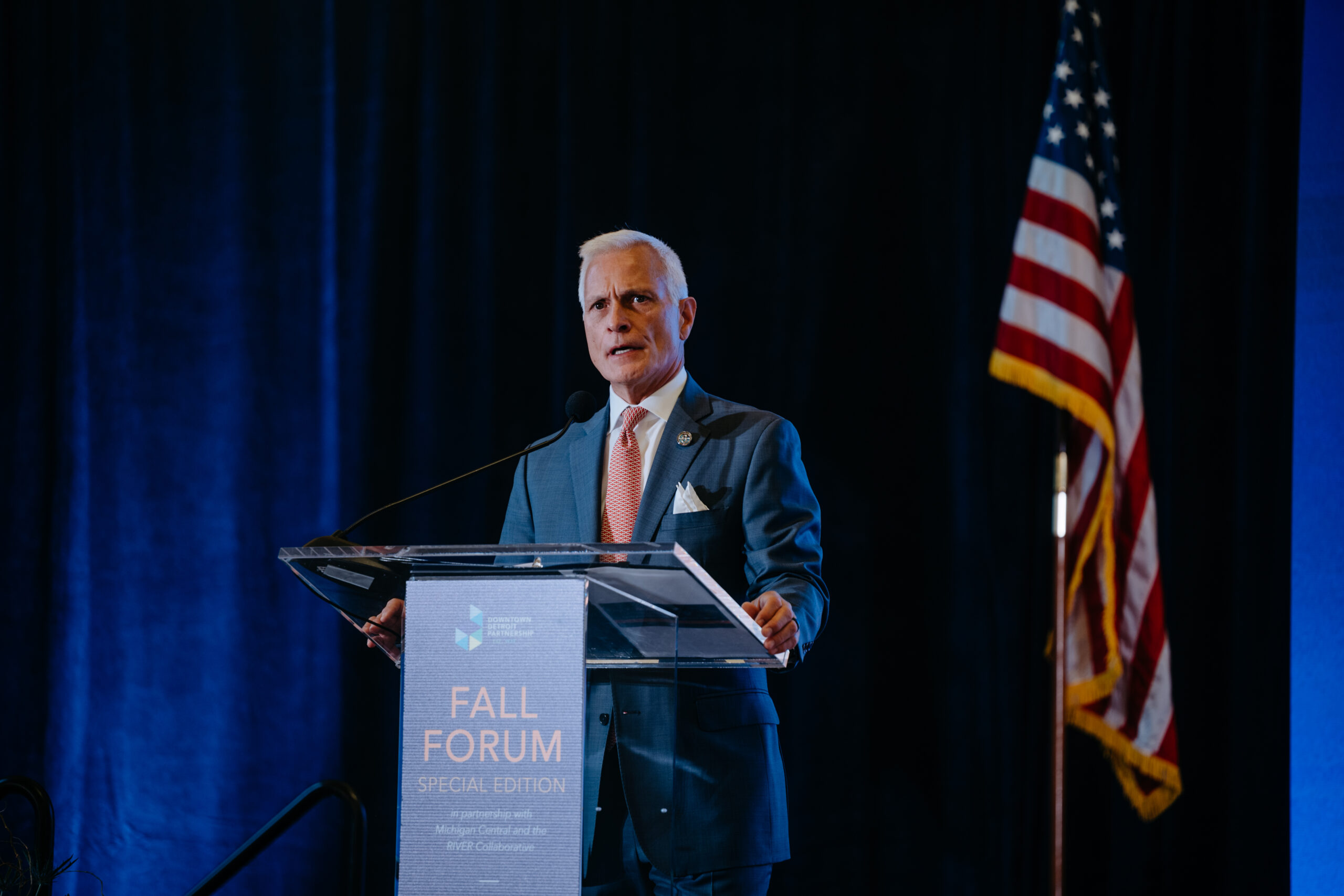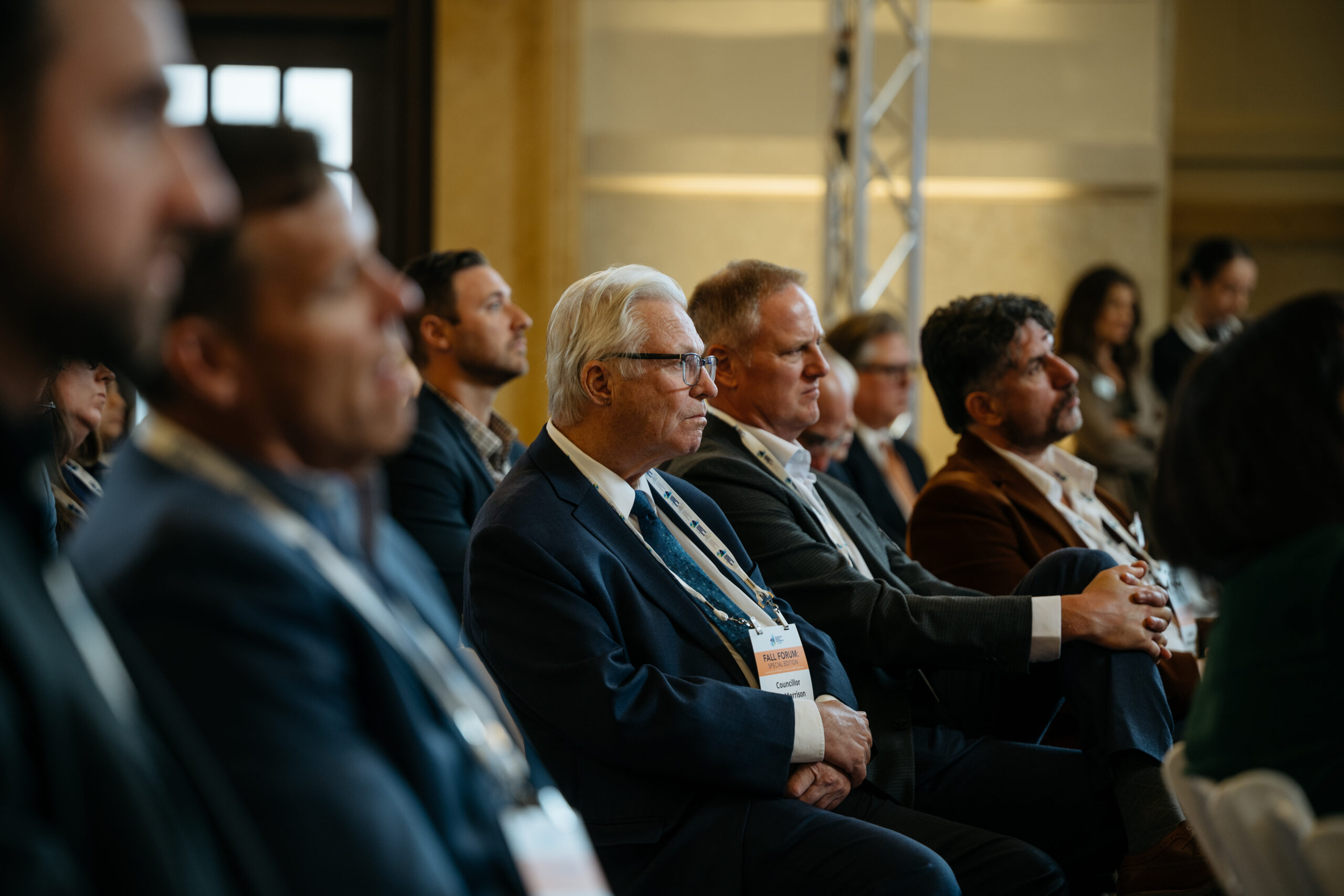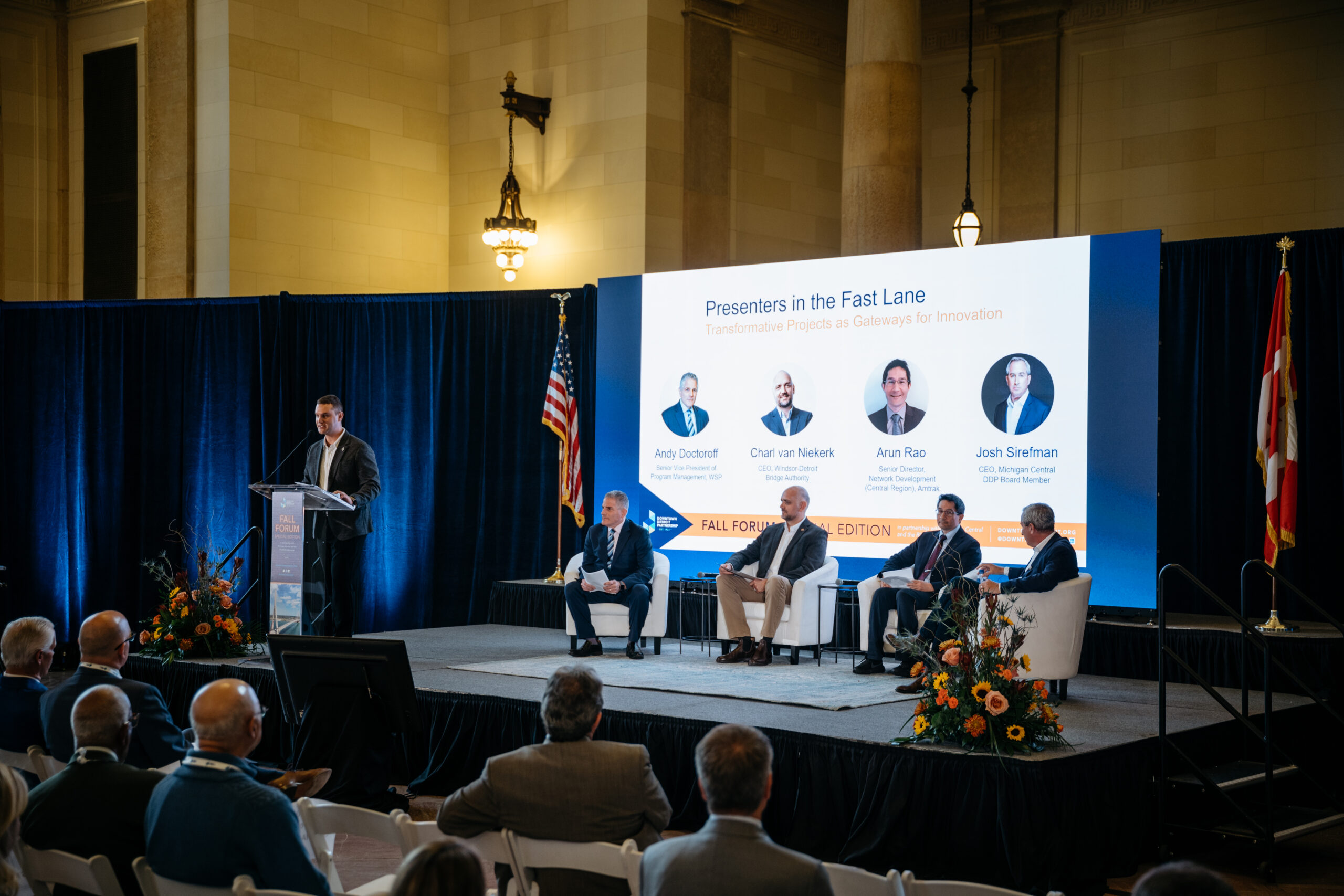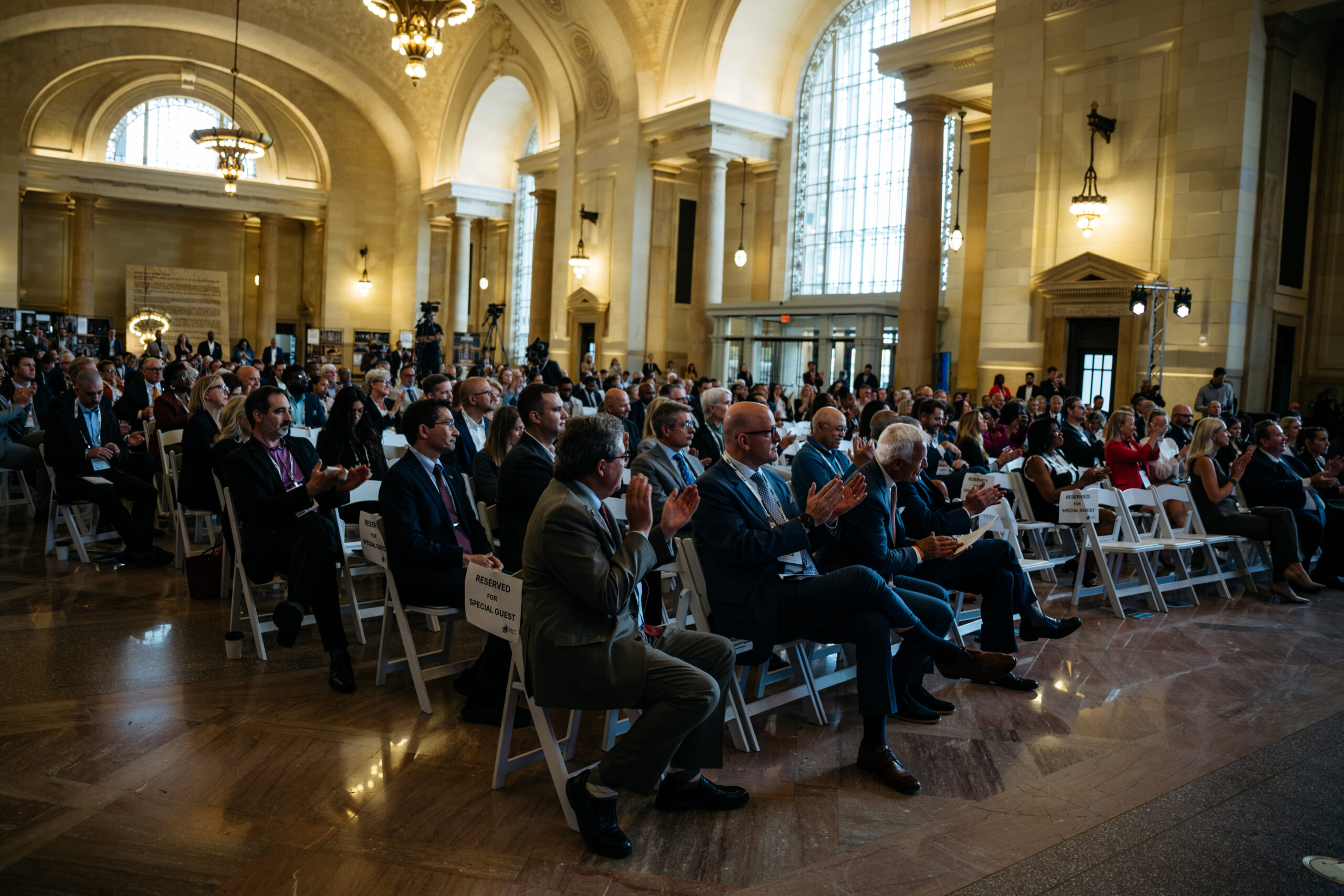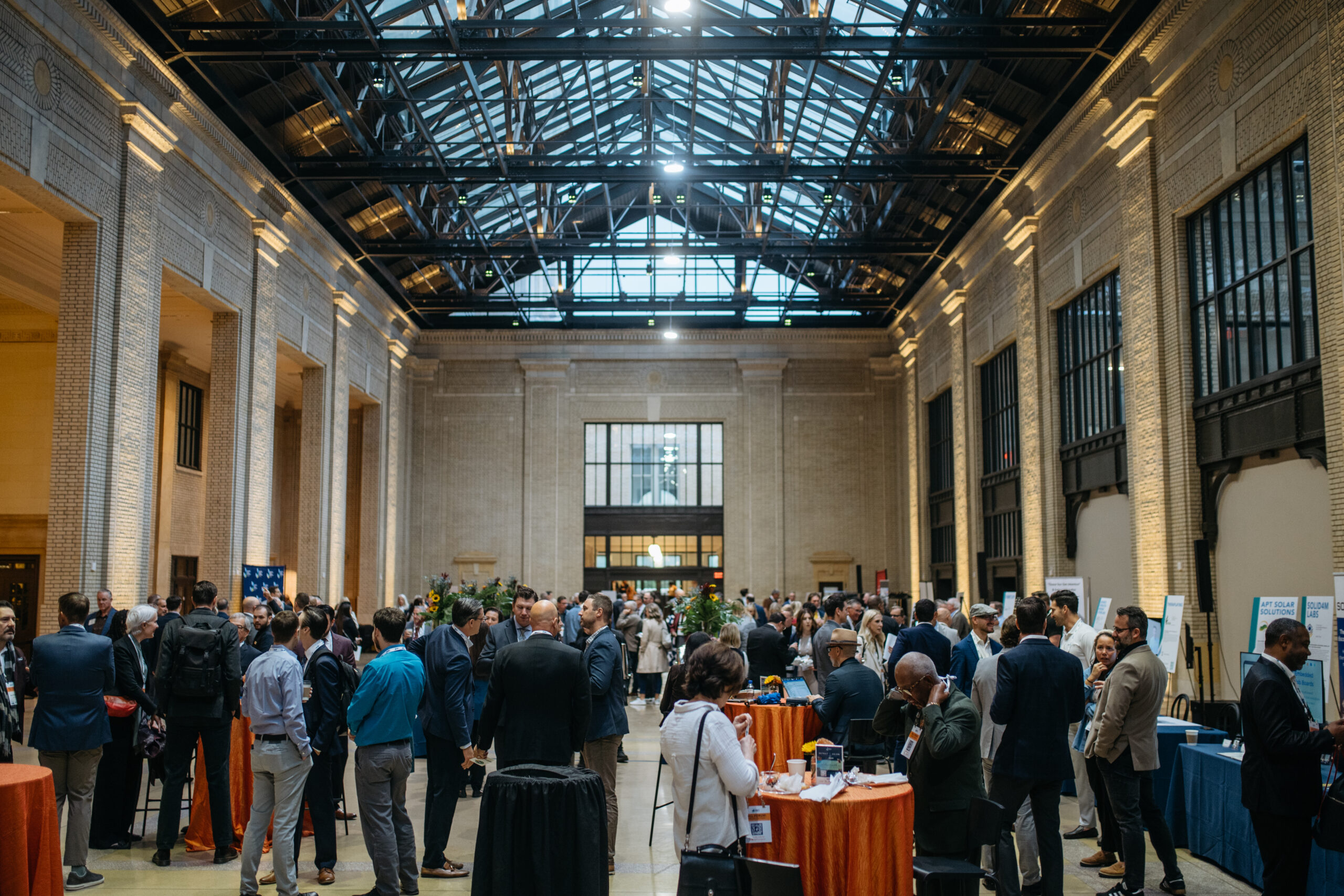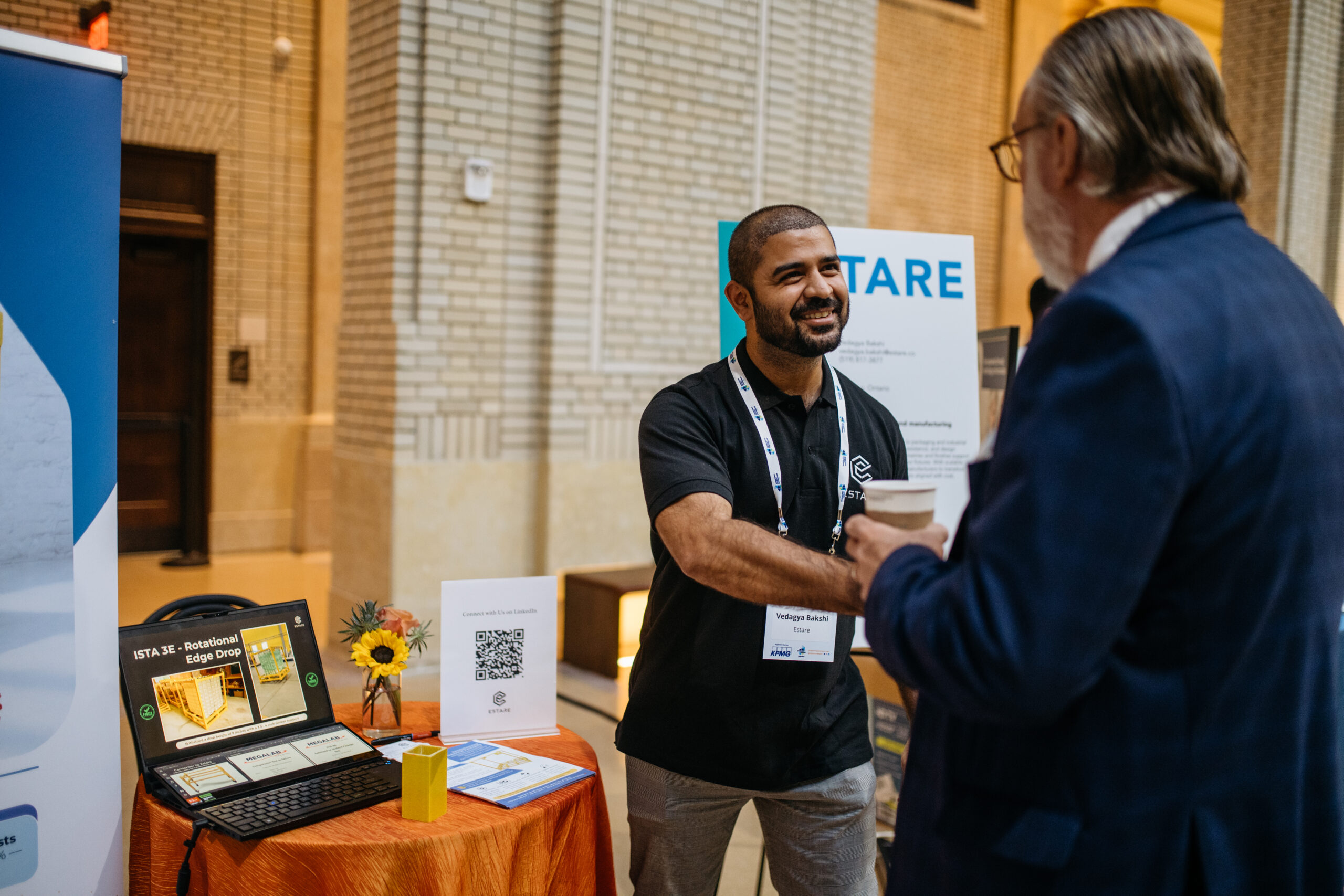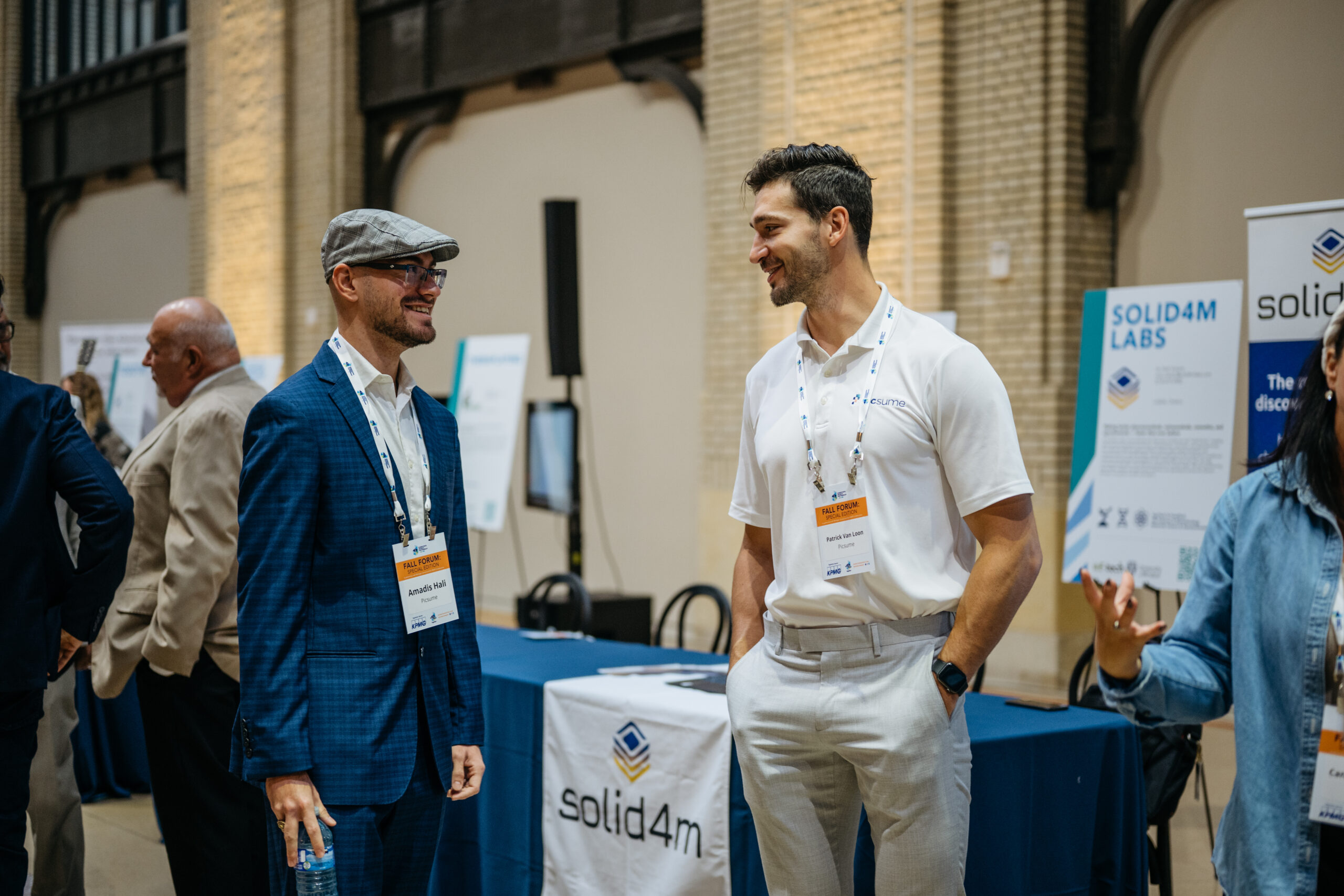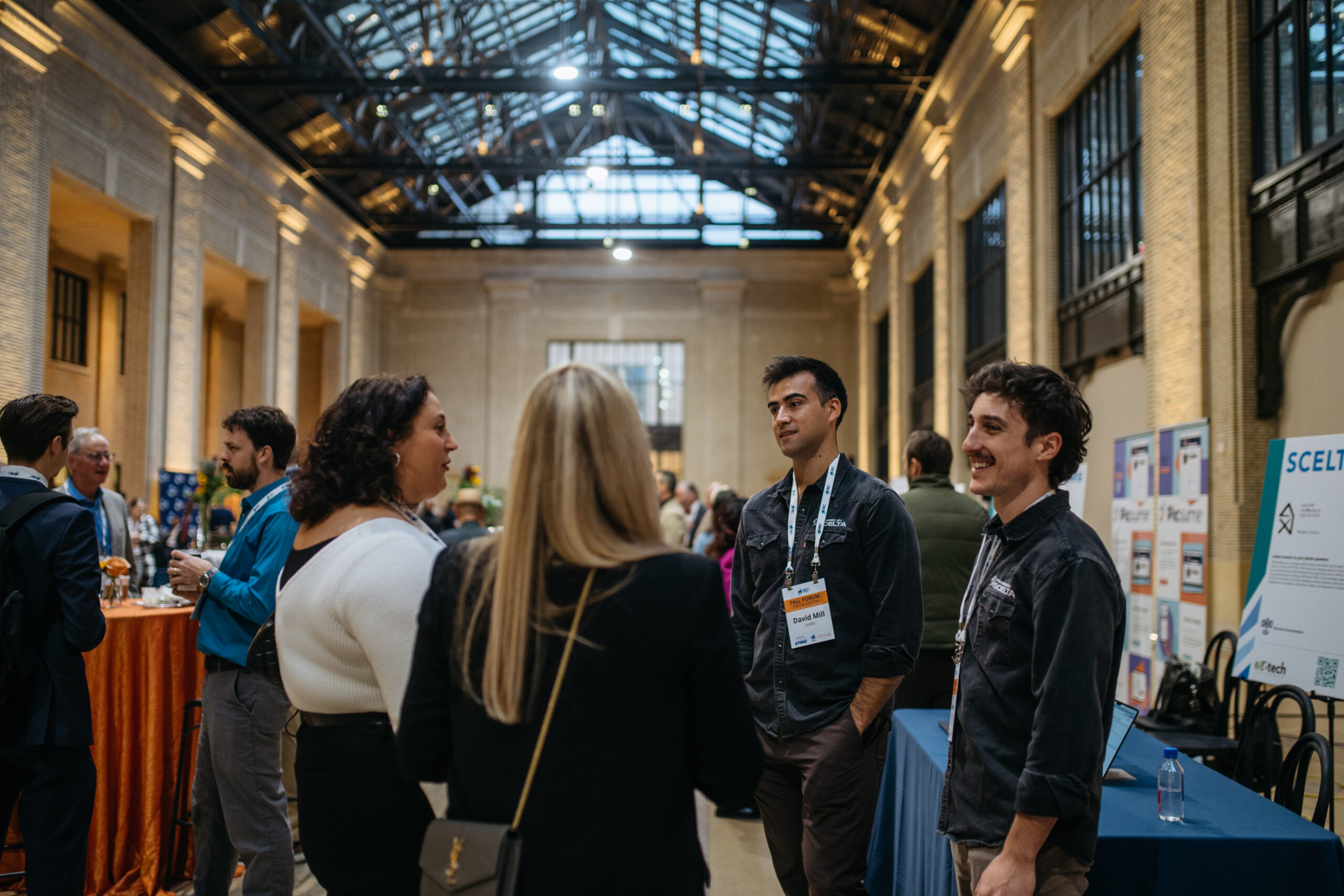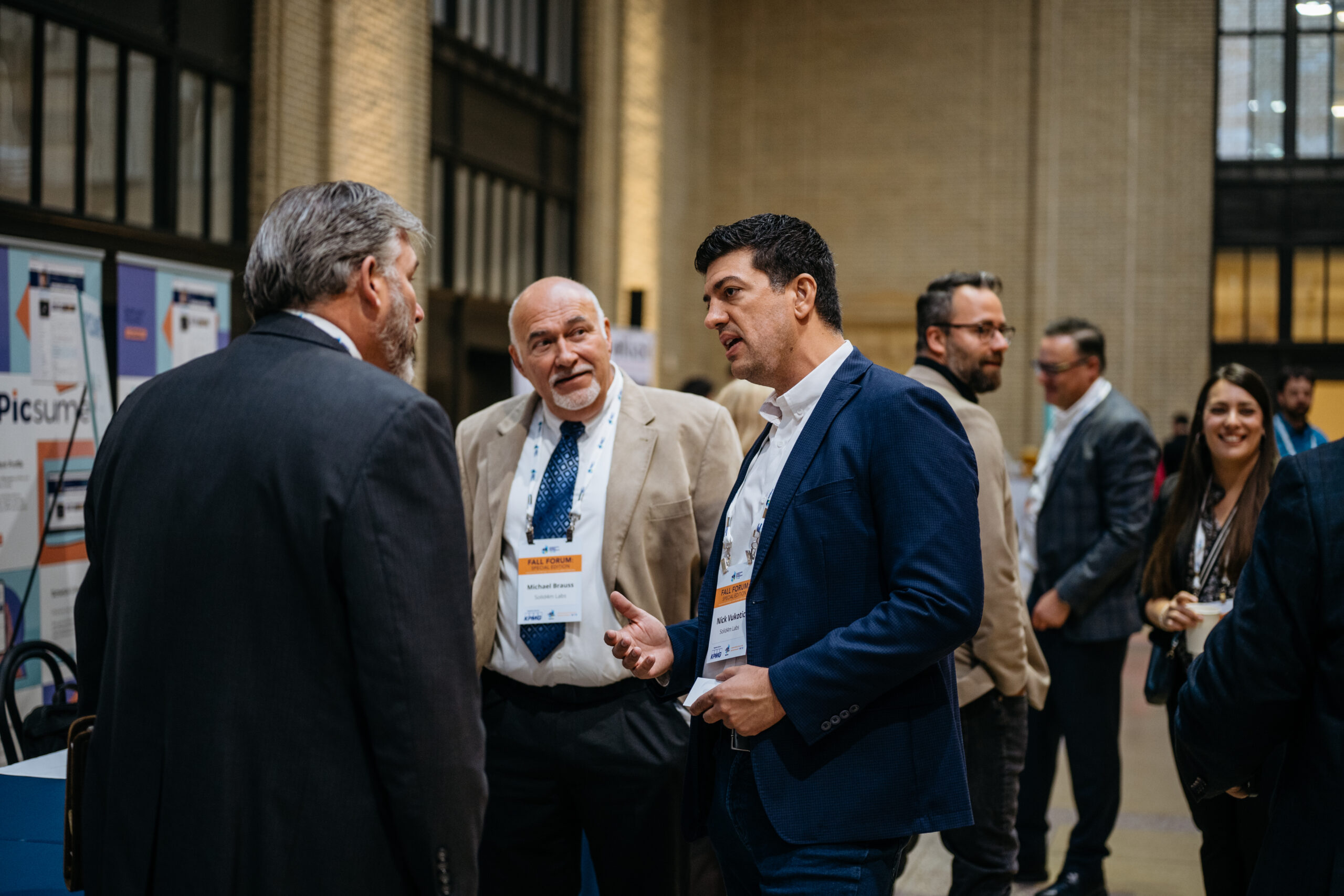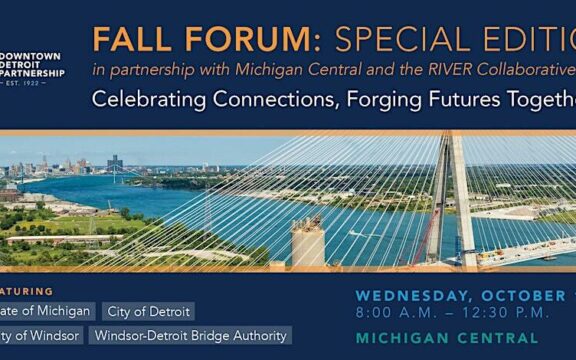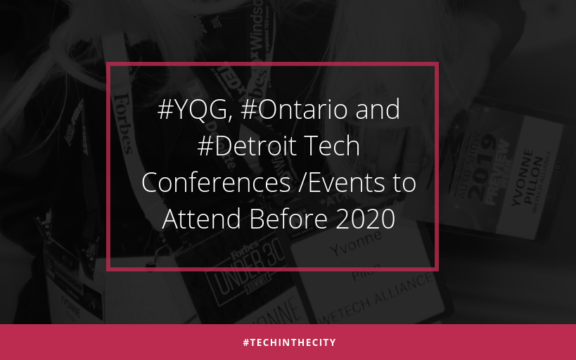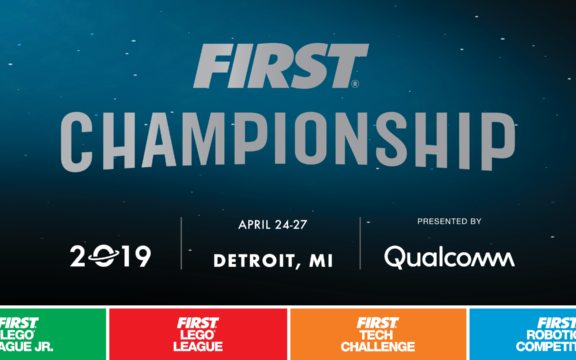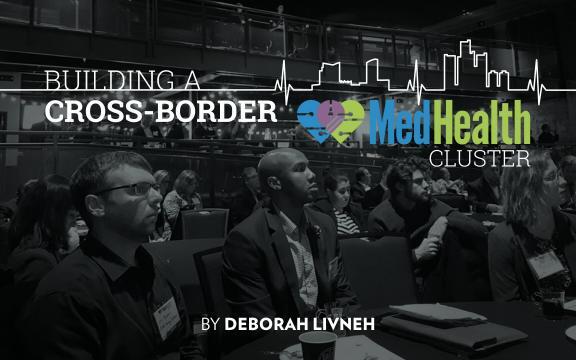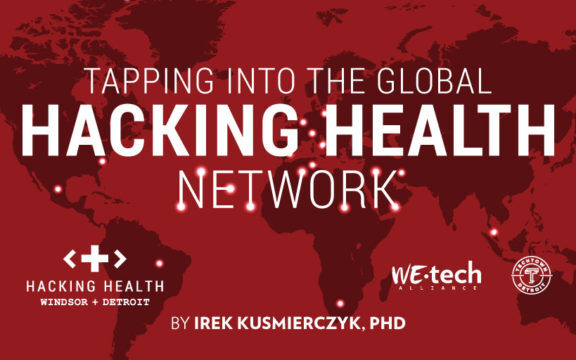By Yvonne Pilon, President & CEO, WEtech Alliance
Last week, the team and I had the privilege of joining leaders from across government, industry, and innovation from both sides of the border at the Downtown Detroit Partnership’s Fall Forum: Special Edition, hosted in collaboration with the RIVER Collaborative & Michigan Central.
For those who couldn’t attend, two excellent recaps capture the key themes and highlights from the day — one from the Downtown Detroit Partnership and another from Hour Detroit.
The event gathered some of the region’s most influential voices shaping the future of bi-national civic leadership, policy, infrastructure & innovation — including Michigan Governor Gretchen Whitmer, Colin Bird, Consul General of Canada in Detroit, Detroit Mayor Mike Duggan, and Windsor Mayor Drew Dilkens, — alongside Downtown Detroit Partnership CEO Eric B. Larson; Michigan Central Chair and Ford Philanthropy President Mary Culler; Michigan Central CEO Josh Sirefman; Henry Ford Health’s Dr. Steven Kalkanis; Invest WindsorEssex and Tourism Windsor Essex Pelee Island CEO Gordon Orr; Research Universities for Michigan Executive Director Brittany Affolter-Caine, Ph.D.; WSP Senior Vice President Andy Doctoroff; Windsor-Detroit Bridge Authority CEO Charl van Niekerk; and Amtrak’s Arun Rao.
Throughout the discussions, leaders explored the evolving story of the Detroit-Windsor corridor — a region defined not only by its shared border but by its shared economy. From infrastructure and real estate to economic and workforce development, mobility, and innovation, every topic pointed to the same conclusion: our greatest opportunities lie in building together.
Our greatest opportunities lie in building together.
At WEtech Alliance, cross-border collaboration isn’t new — it’s part of our DNA.
From launching the world’s first Hacking Health Windsor–Detroit — which evolved into today’s MedHealth Cross-Border Cluster — to having a cross-border advisor on our board, we’ve always viewed this region as one connected innovation economy, not two separate ecosystems.
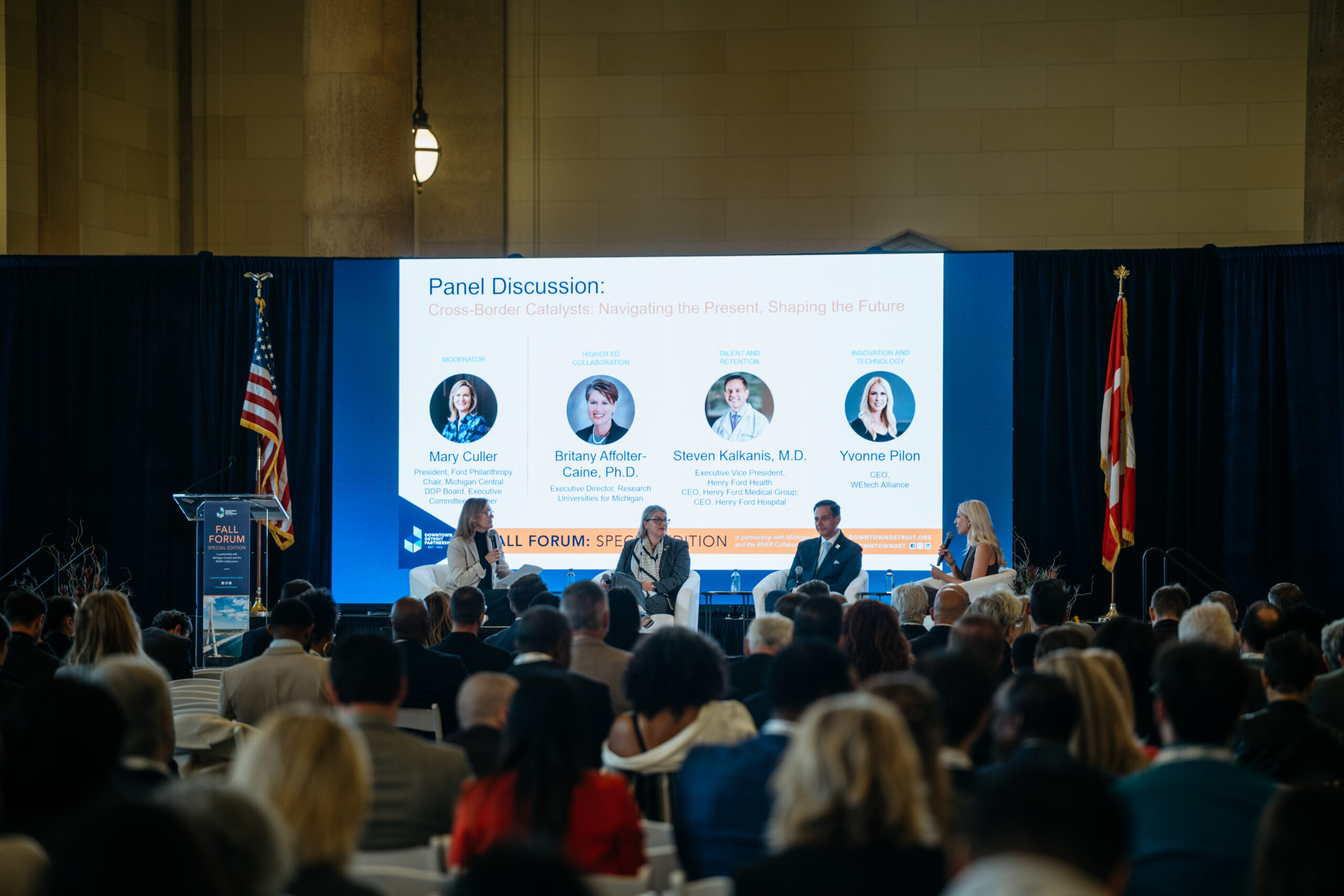
We’ve seen what that looks like in action.
- Rocket Innovation Studio in Windsor, now celebrating its sixth year and more than 100 employees, stands as a powerful example of nearshoring success — a Detroit-based company supporting Canadian talent while strengthening both sides of the river including Windsor’s downtown core.
- Windsor-based Optimotive now has a presence at Newlab Detroit, showing how startups can scale across borders and thrive in a binational innovation environment.
- Ontario and Michigan have signed Memoranda of Understanding (MOUs) to collaborate on cross-border testing, research, and commercialization of next-generation transportation and mobility technologies — including the establishment of a binational drone corridor to support healthcare deliveries, just-in-time logistics, and emergency response.
- The Windsor–Detroit Tunnel is one of the identified Transportation Pilot Zones (TPZs) under Ontario’s OVIN (Ontario Vehicle Innovation Network), serving as a living testbed for safe and connected cross-border mobility.
- Women in Mobility Detroit helped inspire the creation of Women in Mobility Canada, launched here in Windsor-Essex — strengthening a network of women leaders advancing mobility and innovation across both sides of the border.
- A partnership between University of Windsor and Wayne State University was designated a Regional Centre of Expertise on Education for Sustainable Development by the United Nations. It focuses on joint research and action around sustainable urban planning, clean water, equitable city-building and green economy innovation for the Windsor–Detroit region. University of Windsor
- AquaAction, headquartered in Montreal, has opened its U.S. headquarters at the Urban Tech Xchange (UTX) in Detroit — catalyzing a binational water-tech ecosystem with startups, researchers and funders from both sides of the border
- Referrals between cross-border champions and organizations are also creating new pathways for startups exploring the Canadian market and landing opportunities across the river. A great example is Motmot, a data-driven pipeline management company helping municipalities prevent failures, prioritize repairs, and optimize budgets. Together, we’re exploring potential expansion into Windsor — and even if nothing formal emerges, the collaboration itself strengthens networks, builds awareness, and reinforces the shared opportunities of being part of a truly binational startup community.
True collaboration within an innovation ecosystem means building the structures and supports that make working together easy and effective. When our values, policies, and funding align, collaboration becomes the norm. By continuing to invest in systems that enable long-term partnerships and shared success, we can strengthen our region’s ability to lead and adapt together.
As I shared during the panel:
“The truth is, innovators don’t see borders the way governments or institutions do. They see opportunities, customers, and testbeds — not customs lines. If we want to keep up, our systems and policies need to reflect that reality.”
Three bets for the future of the Detroit-Windsor corridor
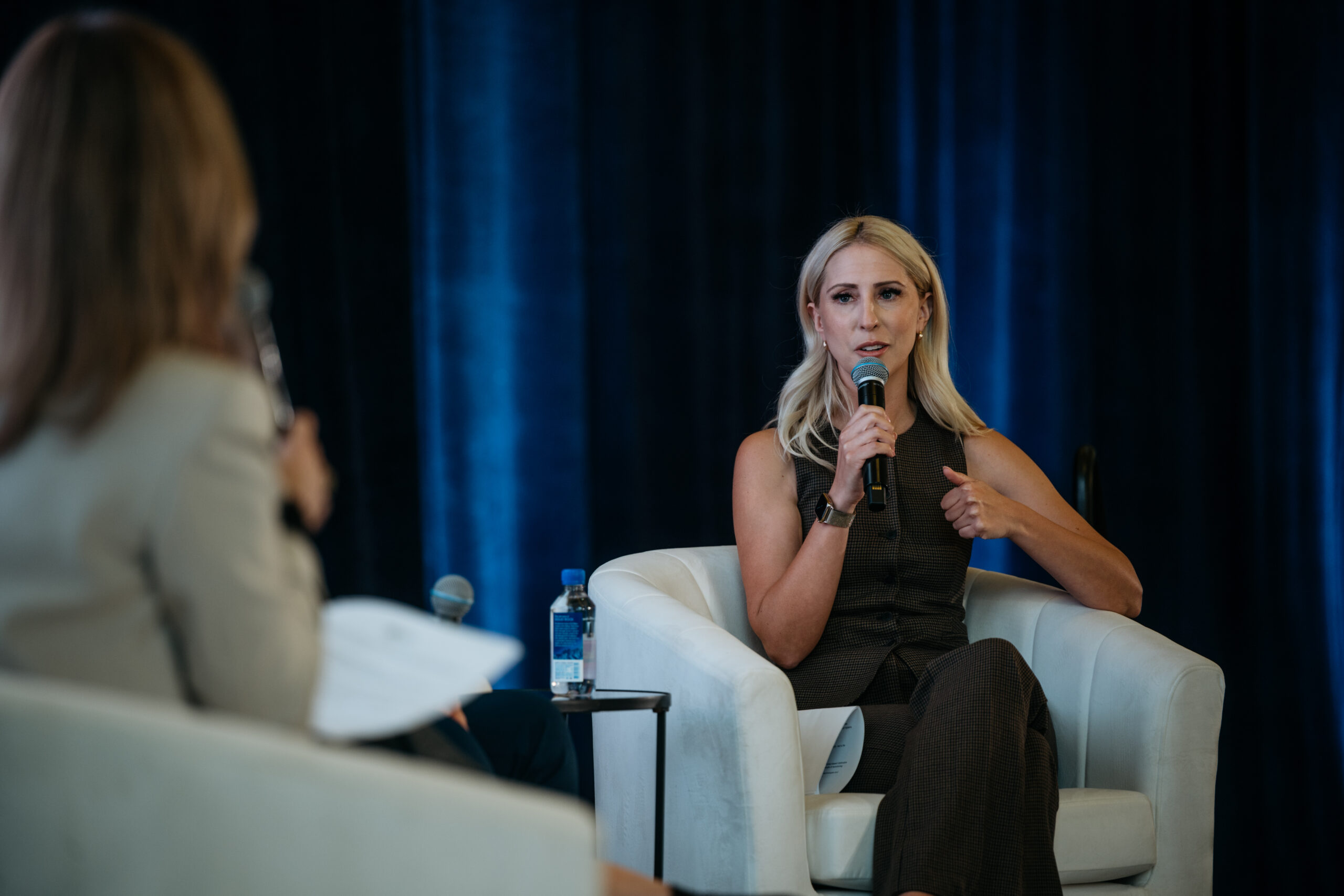
Looking ahead, I believe three strategic bets will shape whether our region emerges as a global model for innovation and inclusive growth.
1. Bet on People — One Workforce, Two Countries
The future belongs to regions that build talent as fast as they build technology. Detroit and Windsor already share one of North America’s most interconnected workforces. USMCA laid the groundwork, but the next step is reimagining cross-border talent mobility for the innovation economy. Let’s build on what works and evolve with the needs of today’s innovation economy — exploring new tools like an “Innovation Passport” to make cross-border collaboration as seamless for startups and researchers as it is for trade.
Our superpower isn’t just proximity — it’s people.
2. Bet on Connected Infrastructure — Seamless Border, Smarter Mobility, Shared Data
The Detroit–Windsor corridor moves over $1 billion in goods every day, but our innovation economy needs infrastructure that moves ideas, people, and data just as efficiently.
During the panel, Dr. Steven Kalkanis of Henry Ford Health noted that more than 1,300 Canadians cross the border daily to work within the Henry Ford Health system — a powerful reminder that our connectivity isn’t just economic, it’s human. These workers are living proof of how deeply integrated our region already is — and how much smarter mobility could strengthen that connection.
Imagine if the same innovation we apply to logistics was applied to people: a cross-border autonomous shuttle moving healthcare workers between Windsor and Detroit, or micro-mobility startups from both cities piloting last-mile solutions on the new Gordie Howe International Bridge.
Adding to that vision, Michigan Governor Gretchen Whitmer announced plans to restore Amtrak passenger rail service to Michigan Central Station, reconnecting Detroit to Chicago — and signaled interest in exploring future connections that could extend service across the river to Windsor and onward to Toronto. It’s an exciting step toward a more connected Great Lakes region.
After the panel, in conversation with Amtrak’s Arun Rao, I even joked that we might soon need a “Startup Express” — a train from Chicago to Detroit to Windsor to Toronto — carrying founders, innovators, and ideas instead of just passengers. But beneath the joke was a real thought: with so many major conferences, partnerships, and tech hubs emerging along this corridor, such a connection doesn’t feel far-fetched. Imagine the collaborations that could happen before the train even reaches its next stop.
3. Bet on Place — Build the Coolest Binational Region to Live, Work, and Create
Innovation economies don’t just attract talent — they keep it. That means investing in the experience of place: housing affordability, robust public transportation, vibrant downtowns, arts, and spaces where tech and culture collide. Detroit has shown the power of reimagining urban spaces, and Windsor can amplify that through inclusive, people-first design that connects creativity, industry, and community. When talent can live affordably, move easily, and feel part of something, retention becomes our greatest competitive edge. The bet isn’t just on what we build — it’s on the people who choose to build their lives here.
Section authored by Adam Castle, Director of Venture Services and Partnerships, WEtech Alliance
Showcasing regional innovation
Standing in the middle of Michigan Central, watching our founders showcase their work, it was hard not to feel proud of how far this region has come.
The event’s Innovation Showcase brought the day’s themes to life, highlighting over a dozen of Windsor-Detroit founders, including five incredible Windsor-Essex innovators:
- Scelta – Transforming construction project management with intuitive tools built with Boots-on-the-ground validation and feedback.
- Solid4m Labs – Increasing the capacity of biotechnology innovators to evaluate Solid Forms, leading to accelerated pharmaceutical development cycles.
- Estare – Innovating on manufacturing packaging using new materials that reduce weight and cost, while increasing strength and durability.
- Picsume – Using AI to empower employers and job seekers to find the right job fit, faster, with less bias, and with more efficiency than ever before.
- True Phantom Solutions – specializes in the design and manufacturing of synthetic medical training models known as phantoms. These phantoms accurately replicate human (or animal) anatomy and are used for a wide range of applications, including medical imaging training, research, and procedural simulations.
Each of the 5 Canadian companies on that floor reflected the same mindset that’s kept our cross-border economy resilient through every shift across the last two centuries. Build boldly, adapt quickly, and keep your roots deep. Each brought something different, addressing the needs of various legacy industries found in our region, but together they told one story: innovation here isn’t abstract. It’s practical, it’s tested, and it’s built to move between markets.
For founders in Windsor-Essex, “cross-border” isn’t a slogan, it’s a reality they navigate every day. They’re proving that even in a pay-to-play landscape, creativity and collaboration still travel faster and farther than tariffs.
Seeing them side by side with Detroit innovators felt like a glimpse of both the history and future of our shared bi-national ecosystem: One economic region designed with intention to give our companies a place to thrive in a global marketplace.
The power of place

The day wrapped up with a tour of Newlab Detroit alongside the City of Windsor delegation — a reminder that place truly matters. Spaces like Newlab and Michigan Central don’t just house innovation; they spark the collisions that connect people, ideas, and industries. Case in point — we ran into Justine Johnson, Senior Vice President and Chief Mobility Officer, Office of Future Mobility and Electrification at MEDC, at the elevator.
From the dynamic maker spaces to Windsor’s Optimotive showcase on the ground floor, we saw how history, industry, and creativity intersect to shape what’s next. And from the rooftop, the potential of our binational innovation corridor was unmistakable — a clear view of what Windsor and Detroit can build together. And yes, the Gordie Howe Bridge looks incredible; 2026 can’t come soon enough.
Closing reflection
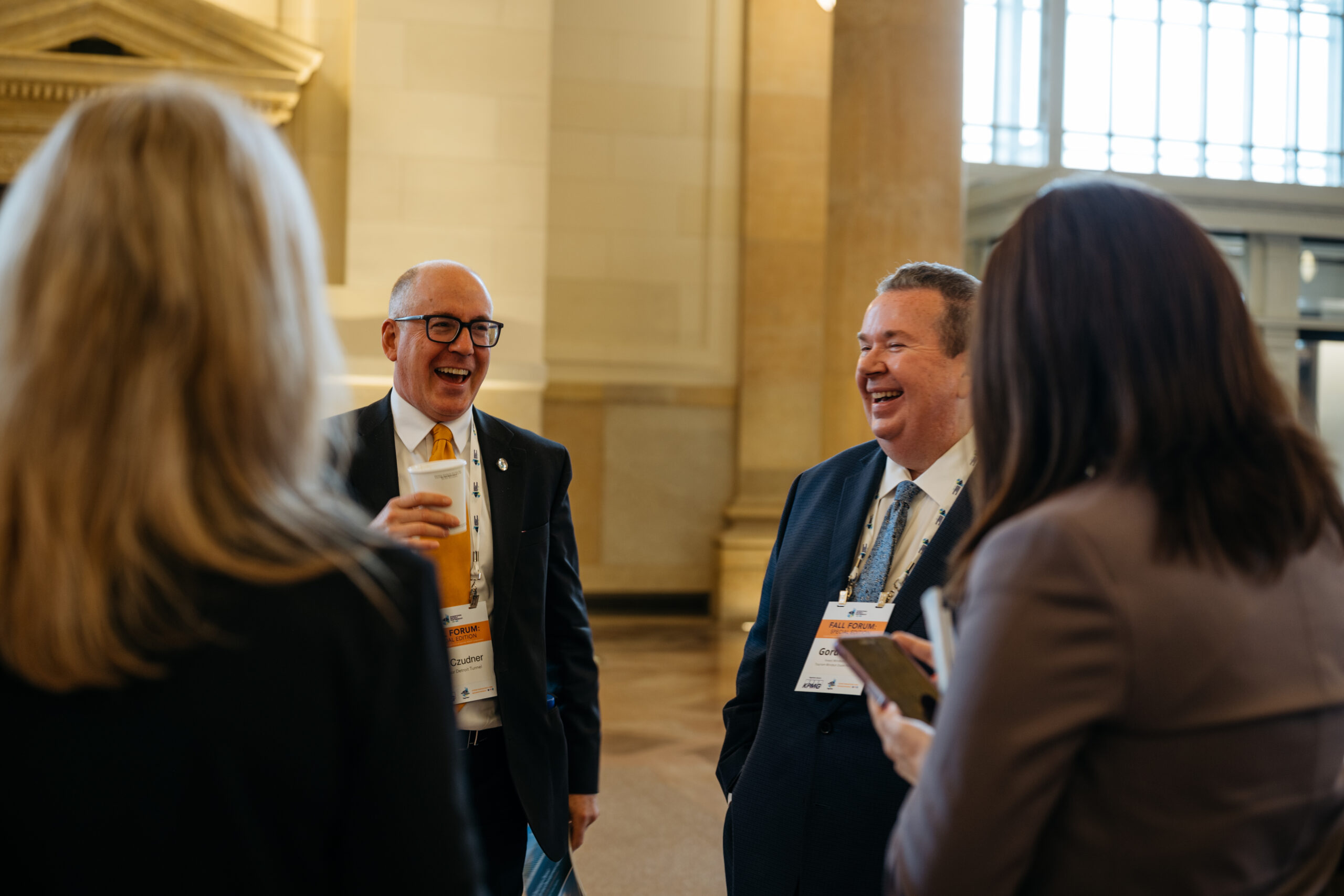
We’ve only begun to scratch the surface of what’s possible. Each time we come together, we uncover new opportunities to collaborate, innovate, and lead.
Special thanks to the Downtown Detroit Partnership, Michigan Central, the Riverfront Collaborative, Newlab, and all event sponsors for bringing this powerful cross-border conversation to life.
And sincere thanks to photographer Steve Koss for capturing several of the moments featured in this post.


